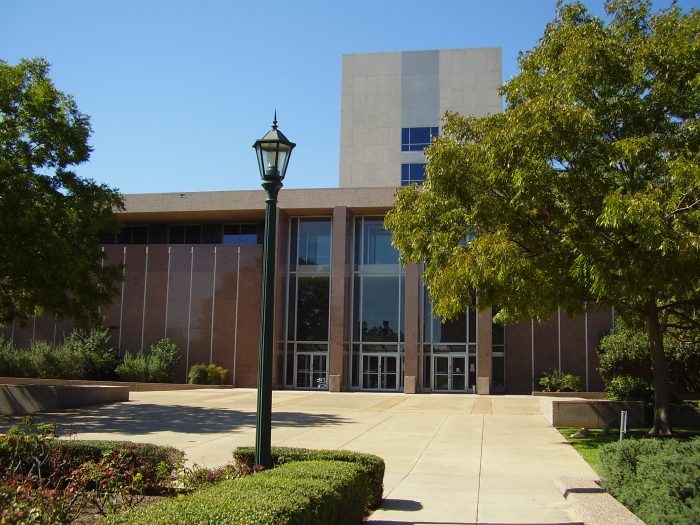Benito Romano, chair of the New York City Districting Commission, at a July 17 meeting. | GAY CITY NEWS
Faced with the prospect that New York City’s Districting Commission could alter City Council districts that have previously elected openly gay and lesbian members to that body, some gay political groups are preparing to submit testimony and data to the commission.
“We definitely would not want to see the districts change in a way that would divide the LGBT populations in them,” said Michael J. Mallon, president of the Lesbian & Gay Democratic Club of Queens. “Usually, Council redistricting tends to be not very drastic.”
The 15-member commission will use data from the 2010 US Census to redraw the lines for the Council’s 51 districts. The data shows that there have been some significant changes in the city’s demographics since the last census in 2000.
Overall, the city’s population grew by two percent to just under 8.2 million, a figure that the city says was an undercount. Whites declined by just under three percent, and the African-American population fell by just over five percent.
The Latino population grew by eight percent while Asians saw a nearly 32 percent increase over the ten-year period, going from 780,000 to just over one million.
“The Asian population for the first time topped one million,” said Joseph J. Salvo, the director of the Population Division in the Department of City Planning, at the commission’s first meeting on July 17. The more significant data are the changes within districts.
In Queens, which has elected two openly gay men –– Daniel Dromm and Jimmy Van Bramer –– to the Council, five districts saw declines in population, ranging from 0.4 percent to 10.1 percent. Other districts saw increases, though the largest was just 5.1 percent.
The two districts at the northern end of Manhattan saw declines of nine percent and 3.5 percent, while two districts at the southern end saw increases of 13.1 percent and 14.3 percent. Salvo said the increases were due to a “young non-family population being fed heavily by in-migration from the rest of the country.”
The district with the 14.3 percent growth is currently represented by Christine Quinn, the City Council speaker and an out lesbian. That district includes Chelsea, Clinton, and the West Village, three white gay enclaves.
In Manhattan, the East Harlem and Lower East Side districts have also elected openly gay and lesbian councilmembers. Rosie Mendez currently represents the Lower East Side, and her district saw nearly five percent population growth.
“We’ll probably do a meeting on the numbers,” Scott Melvin, president of the Gay & Lesbian Independent Democrats, a Manhattan club, told Gay City at the July 17 meeting.
The city charter requires that the districts have roughly the same population. This year, they must have about 160,000 people and the difference between the least populous and most populous districts cannot be more than 10 percent or about 16,000 people, said Thaddeus J. Hackworth, an attorney in the city’s Law Department, at the July 17 meeting.
The districting process is also governed by provisions of the federal Voting Rights Act of 1965. Due to prior violations of that act, changes to the Manhattan, Brooklyn, and Bronx districts must be approved by the Department of Justice or a federal court in the nation’s capital.
Sexual orientation and gender identity are not among the protected classes in the Voting Rights Act, which could disadvantage lesbian, gay, bisexual, and transgender New Yorkers. New York City’s districting process, however, has explicitly political components.
Seven of the commission members were appointed by Mayor Michael Bloomberg, five were appointed by the Council’s Democratic majority, and three were appointed by the Council’s Republican minority. Other than making his appointments, the mayor has no further formal involvement in the process. The commission’s initial plan must be made public by September. A draft plan must be submitted to the City Council for comments and objections by November 5. The fact that the Council must approve the plan has led one political group to skip the process.
“The City Council doesn’t respond, Christine Quinn responds,” Allen Roskoff, president of the Jim Owles Liberal Democratic Club. “I don’t see us having any influence over it as long as it’s in Quinn’s hands.”
Roskoff has been a consistent Quinn critic on a number of issues. At an annual party he holds, Roskoff has had a club member appear in drag as Quinn and he married Quinn to another club member dressed as Bloomberg.
The Empire State Pride Agenda, the statewide gay lobby, and the Stonewall Democratic Club of New York City will not testify or submit data to the commission. The co-chairs of the Lambda Independent Democrats did not respond to an email or calls seeking comment.
At the July 17 meeting, the commission elected Benito Romano, a Bloomberg appointee and a partner at the law firm Freshfields Bruckhaus Deringer, as its chair. The commission will hold five public hearings, one in each borough, in August.




































